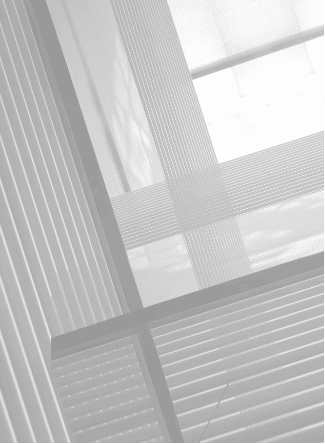What Is Long Chin Surgery?
Most people focus on their nose when they think about the appearance of their face. But the chin is a major feature of the lower face and has a big impact on the appearance of other features, especially the nose.
While most of the people who request corrective chin surgery/reshaping of the chin bone (osseous genioplasty/mentoplasty) have an overly-small or receding chin, some are unhappy with an overly long or prominent chin.
A large chin (also known as macrogenia) affects facial proportions, making the face appear “bottom-heavy” and more masculine. Women often request correction of a long chin to feminize the face to better reflect their identity and improve self-esteem.
Thinking About Surgery for a Long Chin
If you are thinking about how to correct your long or prominent chin, Dr. Deschamps-Braly recommends you consider jaw surgery or chin surgery in the context of your whole face. This requires a surgeon experienced in altering the facial skeleton who also has the ability to understand how any changes will influence the appearance of the face.
Dr. Deschamps-Braly is trained and has extensive experience in three surgical disciplines critical to improving the appearance and function of the whole face and chin:
- Plastic surgery (soft tissue surgery)
- Craniofacial surgery (surgery for the underlying facial skeleton)
- Orthognathic surgery (jaw surgery)
This enables Dr. Deschamps-Braly to choose the most effective surgical option to give the best possible result for his clients while minimizing the risk of medical complications and the need for additional chin revision surgery.
Choosing your surgeon is a vital consideration for a successful and visually pleasing result. In our clinic, revision of chin surgery performed by a previous surgeon is a common request of clients who are not happy with the results of their previous surgery.
Revision of an osseous genioplasty is possible and our revision surgeries create great results for our clients. But previous metal hardware can be difficult to remove. A power tool might be needed and this carries a risk that residual metal may be left in the bone.
Options for Chin Reduction Surgery
People have vertically long chins because of too much bone development and the height of the chin bone below the roots of the teeth is too long. But people with long chins often have no functional problems with the jaw or teeth.
On the other hand, people with protruding chins (too long horizontally) can have an overgrowth problem of the entire lower jaw and jawline. This can create bite problems such as underbite or malocclusion.
To reshape a vertically long chin to be proportion with the rest of the face, bone must be removed from the chin. The sliding genioplasty technique used for receding or small chins can also be adapted for long chins.
Under general anesthesia, the lower portion of the chin is cut horizontally to separate the chin bone from the jaw. An additional slice of bone is then removed to decrease the height of the bone and the chin is reattached and held in place with metal plates. There is also an option to set the chin back if the client also has a protruding chin.
Surgeons performing chin reductions must take care to ensure soft tissues surrounding the bone and any soft tissue attachments to the bone remain intact. This is especially important for large vertical chin reductions. Our clinic takes steps to decrease complications and side effects by ensuring:
- Soft tissues are supported
- Speech is not impaired
- Roots of the lower teeth are not affected
- The sensory nerve (mental nerve) providing sensation to the front of the chin, lower lip and front teeth is not damaged
Planning for Chin Surgery
Dr. Deschamps-Braly is a Board-Certified plastic surgeon and craniofacial surgeon specializing in facial plastic surgery, orthognathic (jaw) surgery, and craniofacial surgery for adults and children. During a consultation, he will listen to your concerns and conduct a thorough physical examination of your face.
Changes to the chin and jaw will affect the appearance of the whole face. Reconstructive surgery for the chin and jaw should be planned in the context of all facial features, sometimes in conjunction with plastic or cosmetic surgery such as rhinoplasty (nasal surgery or “nose job”). Dr. Deschamps-Braly always considers the overall aesthetics of the face when improving the appearance or function of any feature.
His skill as an orthognathic surgeon and a plastic surgeon gives him the experience to address any needs for bone surgery of the chin and/or jaw and the aesthetic sense of an artist to ensure a pleasing result. Dr. Deschamps-Braly has experience in many types of chin procedures including chin augmentation, recontouring and reshaping.
Note, he does not recommend the use of chin implants.
Before the surgical procedure, Dr. Deschamps-Braly will use photographs, X-rays and CT scans of the face, including the facial profile. He will also ask for 3-dimensional imaging of the teeth. Before your surgery, Dr. Deschamps-Braly can use all this data to perform virtual surgery, which is a complete simulation of the procedure including a complete simulation of the procedure with precise positioning of the chin.
Recovering From Chin and Jaw Surgery
Most genioplasty procedures do not create visible scarring. They are usually performed through incisions inside the mouth so there is no external or visible evidence surgery. The surgeon might recommend the client wears a chin strap for a short time to support the chin area during recovery.
There are new techniques in orthognathic surgery to decrease the swelling and recovery time associated with larger operations.
Immediately after your surgery, you may feel discomfort and mild pain. Depending on the procedure, you may also experience tingling and swelling. Any pain should be relieved with over-the-counter or non-opioid painkillers.
Most of the pain and swelling will improve within the first few days after surgery. You may be restricted to a liquid diet for a few days. After this time you will be able to start eating soft foods and eventually return to your normal diet. Your surgeon will advise when you can return to strenuous activity.
Want To Know More?
- Chin Surgery (Genioplasty/Mentoplasty)
- Chin Reduction (Osseous Genioplasty)
- Receding Chin Surgery
- Square Chin Surgery
- Orthognathic (Jaw) Surgery
- Revision Genioplasty (Chin Surgery)
- The Problem With Chin Implants
References – For Those Who Like to Dig Deeper
- Feminization of the Chin: Genioplasty Using Osteotomies. Deschamps-Braly J. Facial Plastic Surgery Clinics of North America, 2019;27(2):243–250.
- Approach to Feminization Surgery and Facial Masculinization Surgery: Aesthetic Goals and Principles of Management. Deschamps-Braly JC. Journal of Craniofacial Surgery, 2019;30(5):1352–1358.



